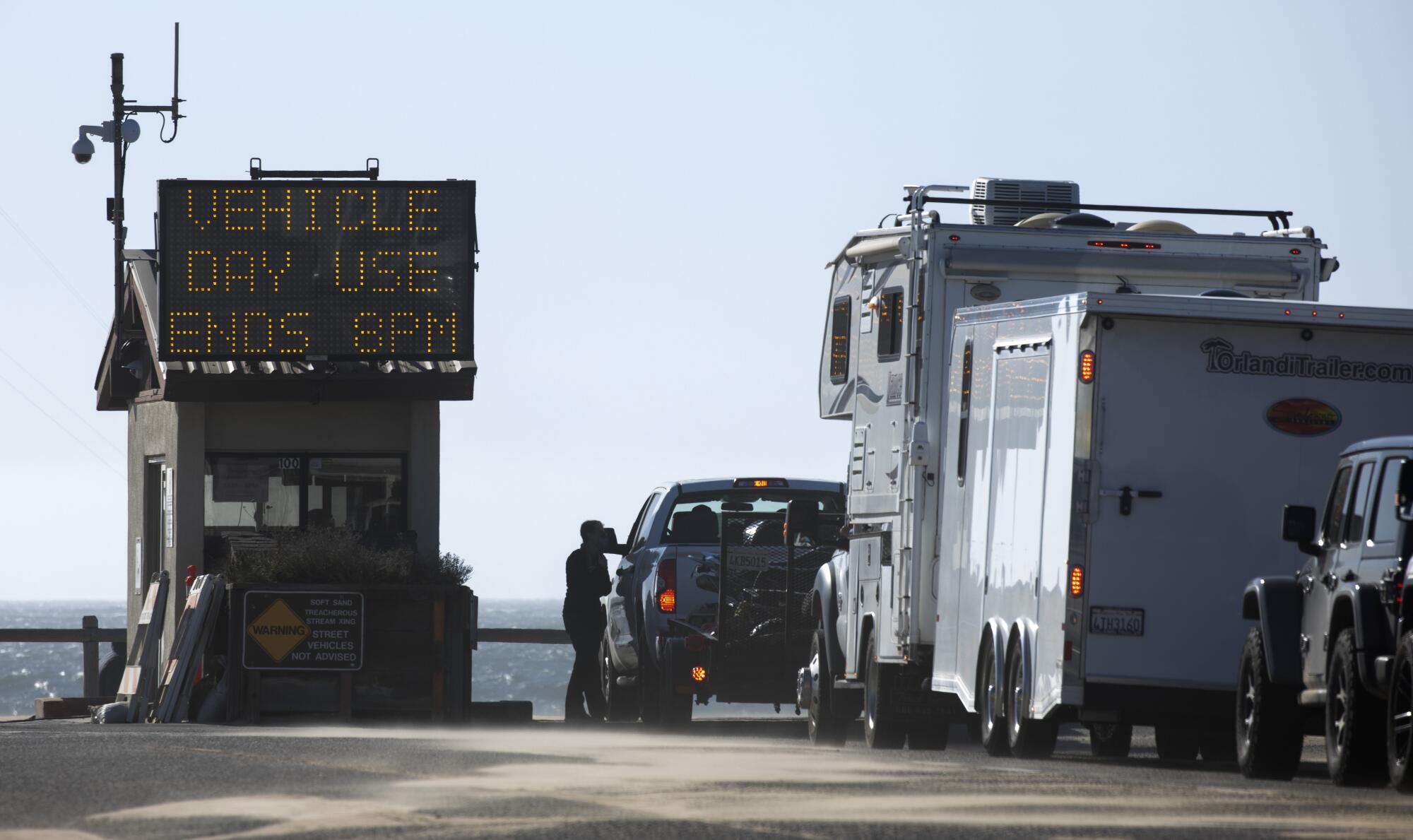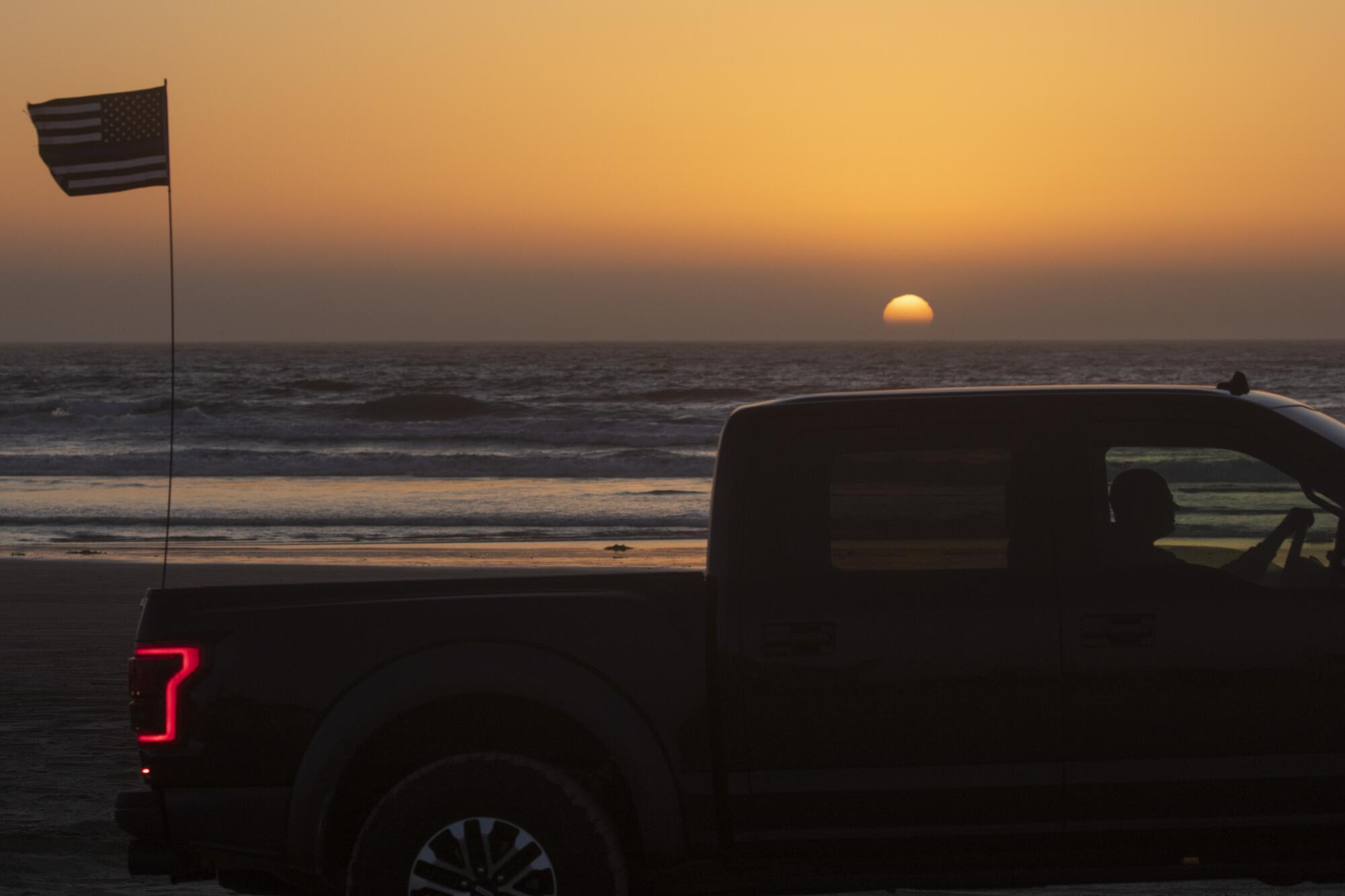
- Share via
SAN LUIS OBISPO — There is little common ground in a decades-long battle over off-road recreation, economic freedom and the fate of California’s dwindling coastal resources.
While the matter is likely to end up in court, the California Coastal Commission is scheduled Thursday to finally decide whether off-road riding will continue to be permitted at Oceano Dunes State Vehicular Recreation Area — the only state park where vehicles can be driven along the beach.
Commission staffers have concluded that off-road vehicle use along the eight miles of shoreline near San Luis Obispo is inconsistent with the Coastal Act and have recommended that it end within five years.
But officials at the California Department of Parks and Recreation disagree and say a vehicle ban would be inconsistent with state laws regarding use of off-highway vehicles, or OHV. Instead, they have drafted a management plan that envisions expanding vehicular and OHV use and installing improvements, including campgrounds and concessionaire space, near scenic Oso Flaco Lake, as well as an OHV historic museum and a shooting range.
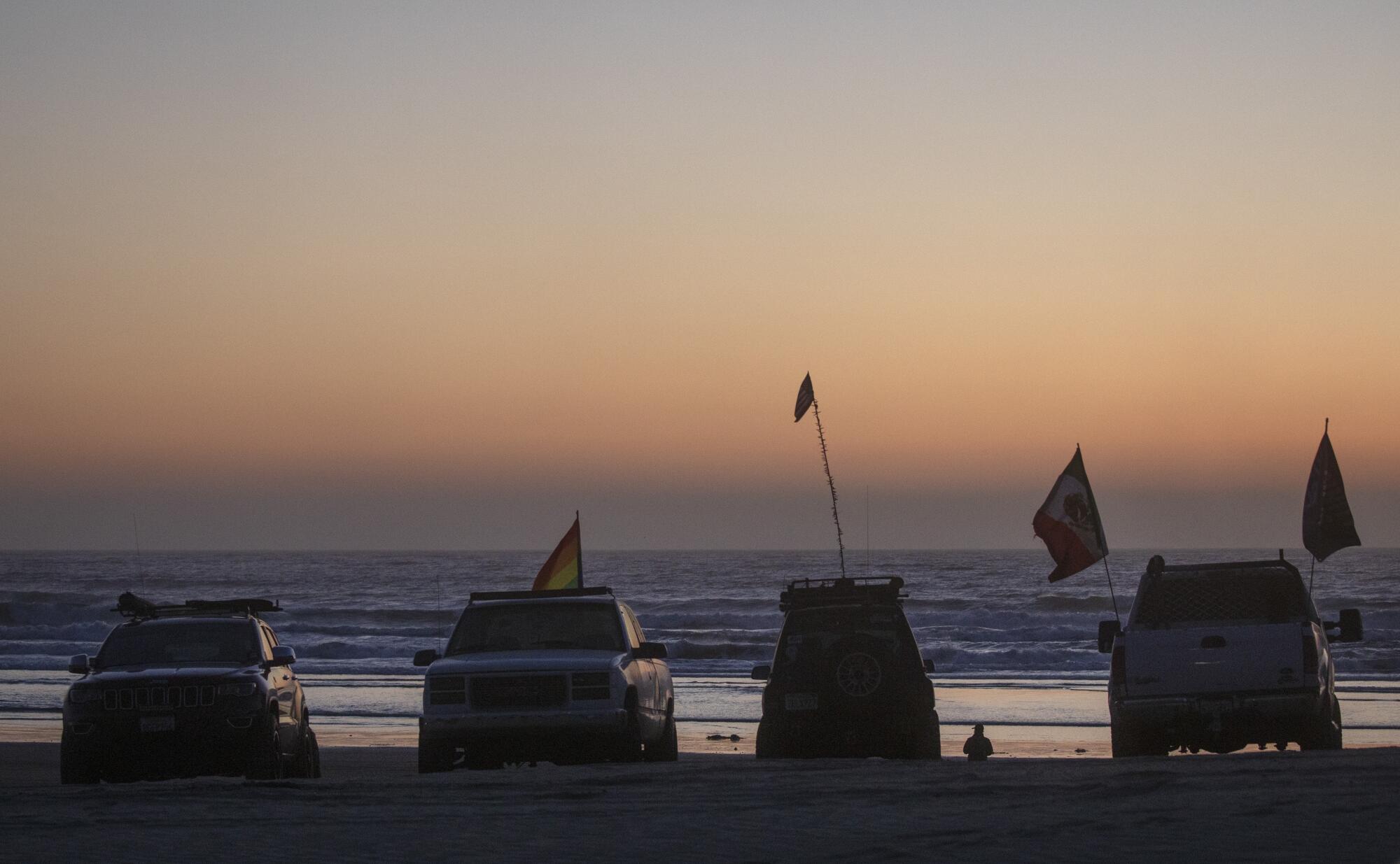
“The meeting on Thursday is going to be crazy,” said Deborah Sivas, an environmental litigator and director of the Environmental Law Clinic at Stanford Law School. “This debate has reached the point of crisis.”
Aaron Peskin, a member of the San Francisco Board of Supervisors and a former coastal commissioner, described the standoff as “a 21st century scandal.”
“The commission has extraordinary legal powers,” he said. “But the OHV crowd is loud, aggressive and combative.”
Friends of Oceano Dunes, an organization representing 28,000 off-road enthusiasts, asserts that banning people from flying over the coastal dunes in customized sand rails, roaring over the wet sand on dirt bikes and kicking up roostertails on high-powered ATVs is a form of elitism. They chafe at the fact that the area they are allowed to enjoy is only about 10% of the 15,000 acres they roamed a few decades ago. OHV activities, they point out, attract nearly 2 million people a year and inject more than $100 million into the San Luis Obispo County economy.
The organization’s leaders have long challenged air-quality experts’ evidence that intensive vehicle use is largely responsible for a pollution problem in nearby downwind communities that are home to more than 20,000 people.
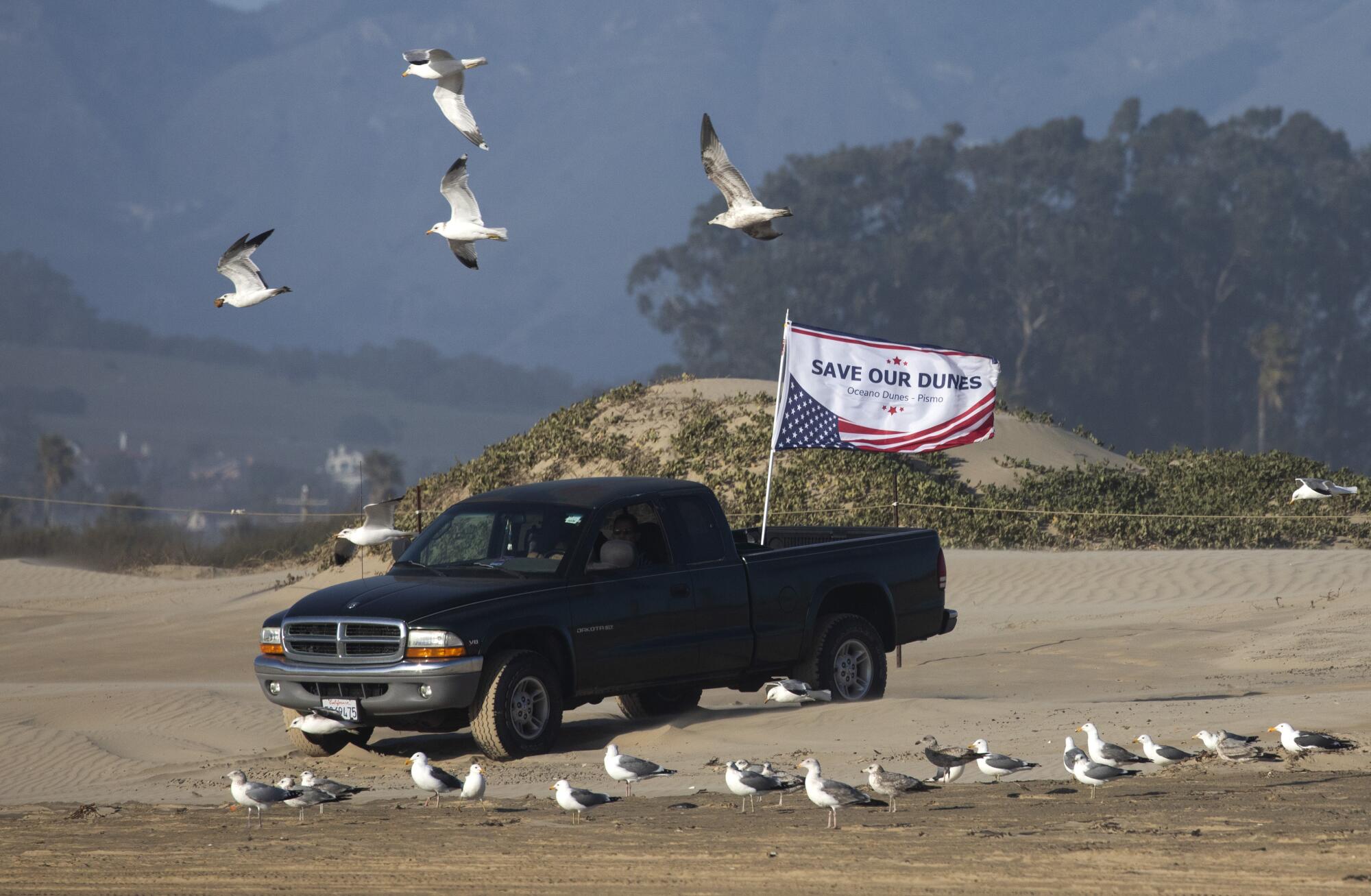
To the mounting frustration of opponents, Friends of Oceano Dunes has been on a winning streak in court. Over the past five years, the group has successfully sued the commission, the California Air Resources Board and the San Luis Obispo County Air Pollution Control District over the agencies’ actions at Oceano.
A year ago, a San Luis Obispo County Superior Court judge ordered the commission to pay Friends $252,726 in attorney’s fees. The order came after the group won a lawsuit accusing the agency of failing to comply with the California Environmental Quality Act in 2017 when it tried to expand dust control measures at Oceano.
As for the outcome of Thursday’s hearing, “unfortunately, we don’t know what to expect,” said Jim Suty, president of Friends of Oceano Dunes.
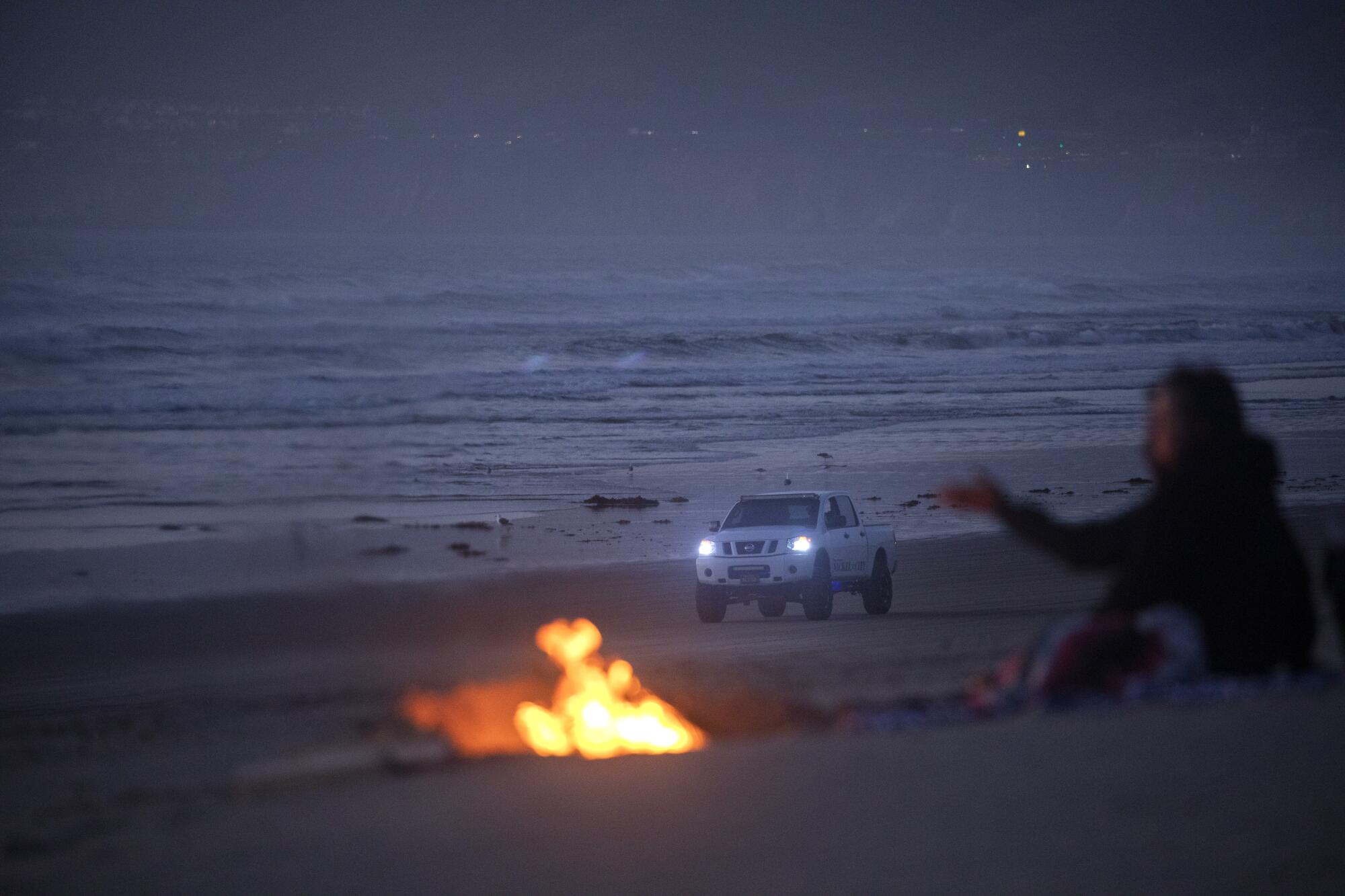
“We believe that the commission is overreaching its authority,” he said. “State parks cannot remove OHV from Oceano Dunes because it is mandated to provide OHV recreation there.”
The trouble started in 1982, after the commission issued a temporary permit that gave state parks officials 18 months to figure out the number of vehicles the area can handle daily and establish a permanent entrance to minimize damage for federally endangered steelhead trout and two species of birds: the Western snowy plover and the California least tern.
But the parks department never finished the job. The 1,500 acres of the park accessible to vehicles have been operating under an “interim” system, with a limit of 5,300 vehicles a day and a main entrance that forces visitors to drive through habitat at the mouth of Arroyo Grande Creek to get to a staging area for unloading dune buggies and motorbikes.
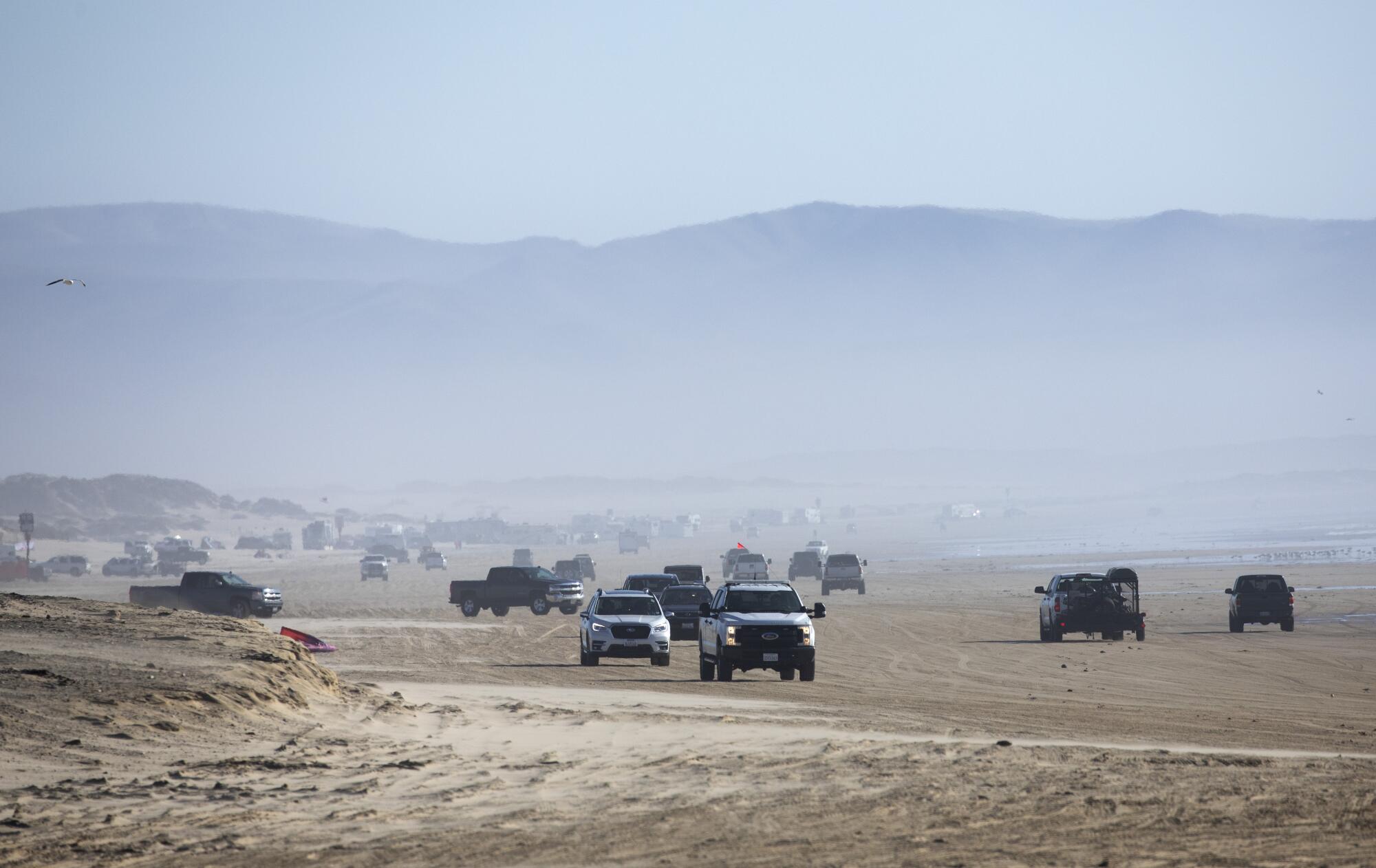
The daily-use limit has been reduced during the COVID-19 pandemic to 2,500 vehicles.
The reproductive lives of federally threatened snowy plovers became a hot topic a year ago, after Oceano locked its gates due to the coronavirus, and the golf-ball-size shorebirds started nesting in areas that are usually open to off-roaders.
The nesting season of the plover runs from March through September, coinciding with the period of greatest human use of the beach at Oceano.
Those clashing interests triggered state and federal investigations into reports that state parks rangers deliberately destroyed plover nests near Pismo Beach in preparation for the reopening of the beach.
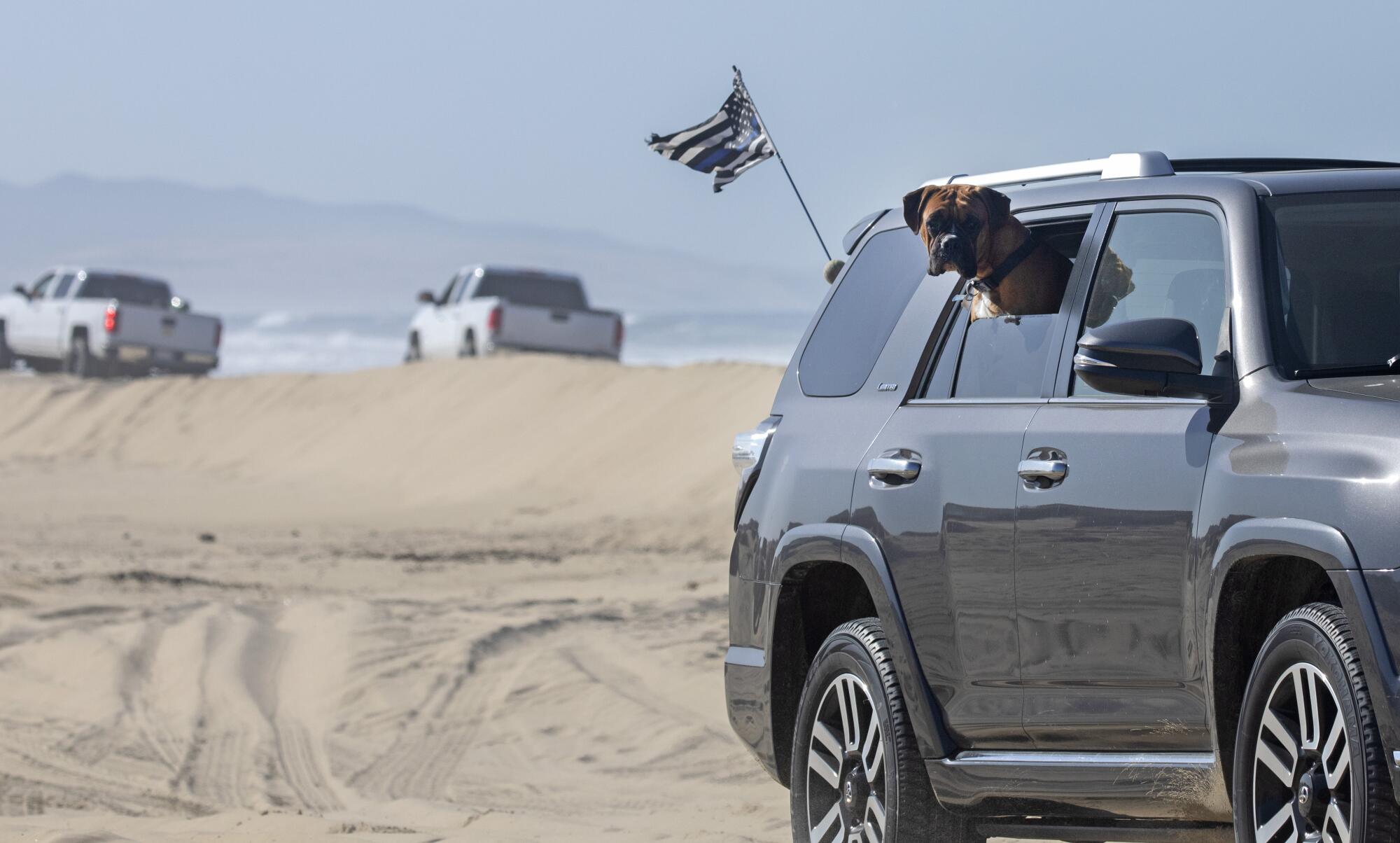
The commission ordered the California Department of Parks and Recreation to cease activities designed to disrupt plover nesting and conducted without coastal development permits. Those violations included brushing away plover nests, which are mere depressions in the sand, installing Mylar flags to dissuade breeding behavior and moving birds.
On another front, commission staffers and air quality agencies have concluded that off-roading raises dust that causes public health issues. But a recent analysis of airborne particulate samples conducted by the Scripps Institution of Oceanography suggests that blowing sand from Oceano Dunes does not pose a health risk for residents downwind of the park.
Many residents have complained about off-roaders driving souped-up dune buggies and sand rails with Confederate flags attached to their steel grab bars, as well as images of automatic rifles and naked women, that make it uncomfortable for the public to walk, swim and enjoy non-vehicular activities at the beach.
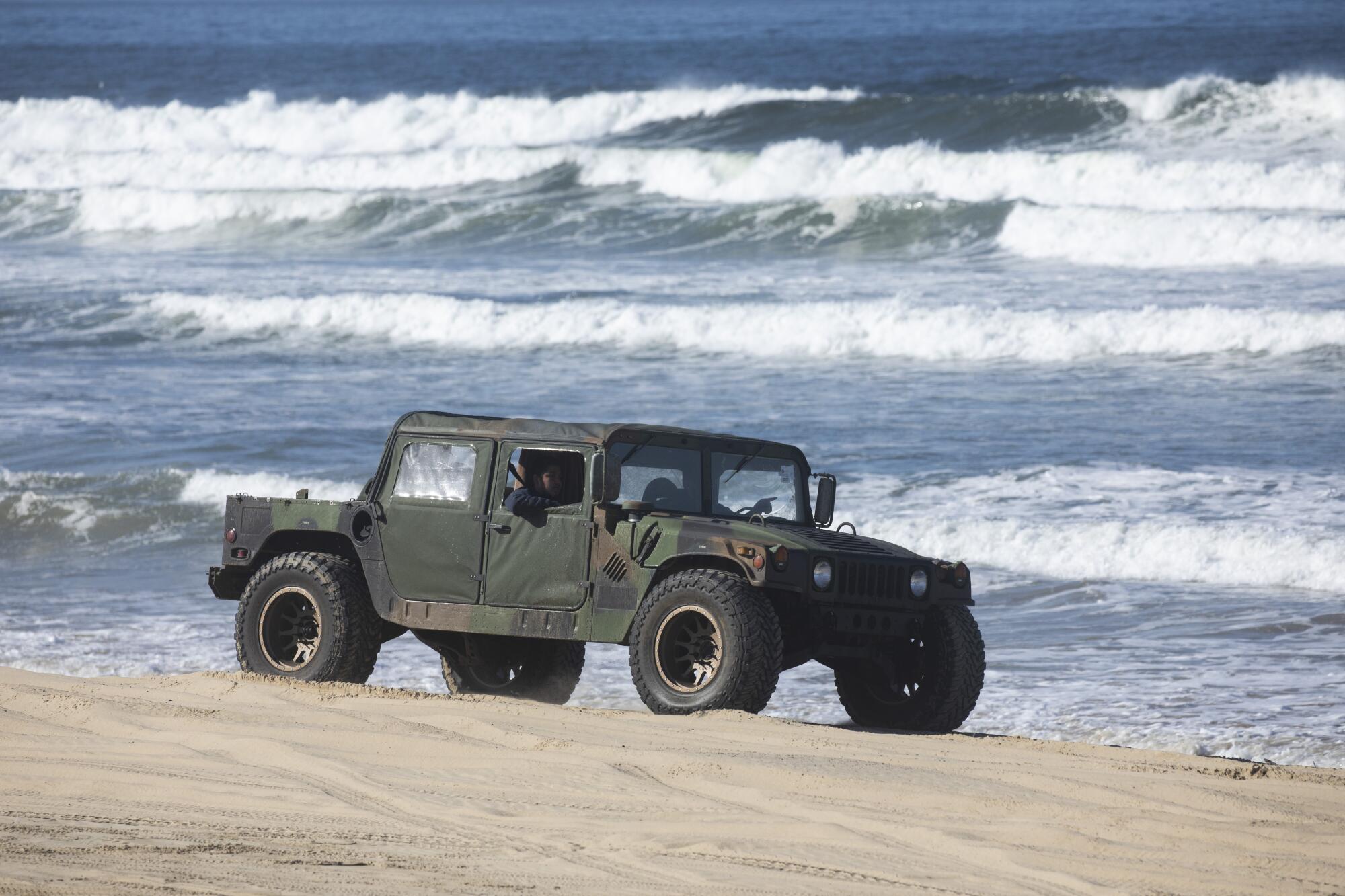
In a statement, the parks department said it “does not have broad authority to prohibit individuals from entering park units on the basis of their choice of clothing, appearance or accessories such as flags.”
The pressures bearing down on Oceano were evident on a recent Friday after the gates opened at the main entrance on Pier Avenue. Drivers of pickup trucks with trailers were getting stuck in the sand and spinning their wheels or hitting the gas to avoid losing traction on the beach, where the speed limit is 15 mph.
Nearby, Jeff Miller, a conservation advocate for the Center for Biological Diversity, was peering through binoculars at shorebirds hunting for insects and crustaceans in myriad tire tracks.
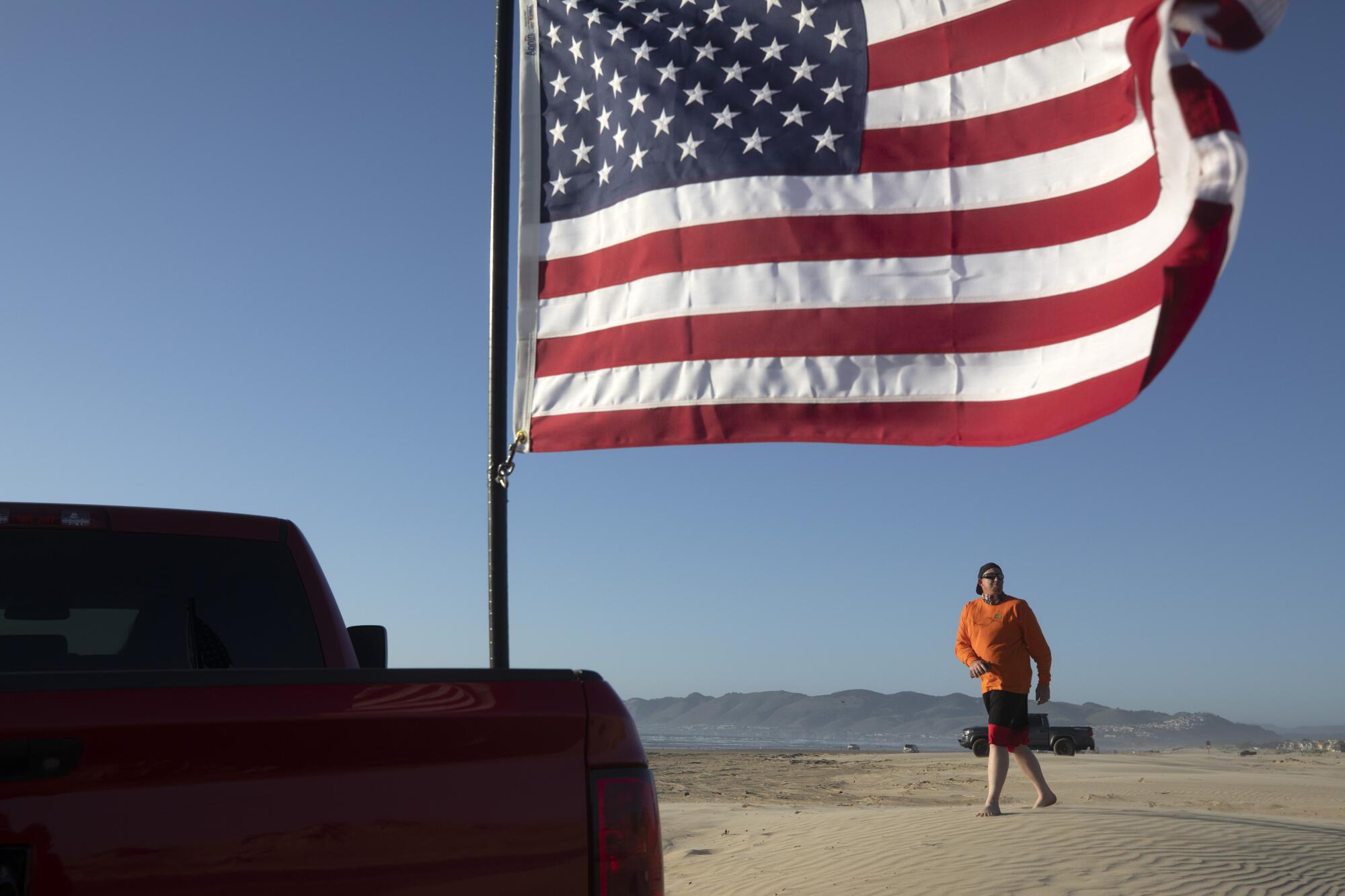
“Should off-roaders be able to run off everyone else, including the species that evolved here?” he grumbled. “Whose state park is this, anyway?”
That kind of talk irked Michael Heim, 43, of Apple Valley, who, like many others was flying an American flag in the bed of his pickup truck.
“This is a working man’s paradise, where families can fly kites over the waves, find amazing sand dollars under their toes and watch the sun go down beside a campfire,” he told a reporter. “Yeah, you can also cut doughnuts in the sand in custom dune buggies, but Oceano Dunes is so much more than that.”
